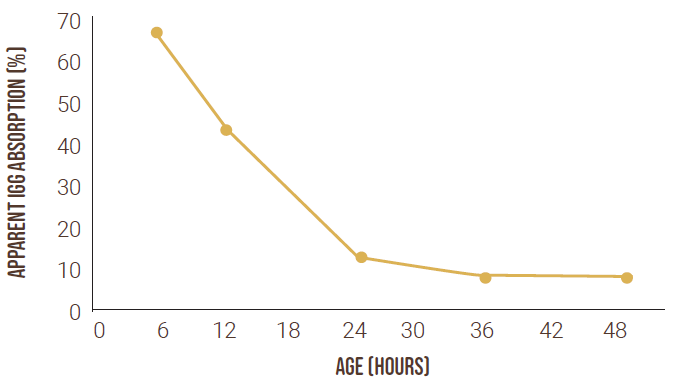What you need to know about a quality calf milk replacer
Calves are not only the future of the farm but also a large initial investment. From insemination, vaccinations, housing, and feed, the costs of raising a calf from birth to a healthy and productive animal are high. Losses during the rearing of these animals can constitute a significant barrier to the dynamic development of modern farming.
Experts say calf mortality should not exceed 5%, unfortunately, many producers struggle with far greater mortality with the most common causes being diarrhea and respiratory diseases. This is especially true in the first month of life while the immune system is developing. Since calves have no antibody transfer from the mother, they depend on colostrum in the first 24 hours of life to receive the required immunoglobulins to jumpstart both gut development and the immune system. Following the initial colostrum feeding, the next decisive factor in proper rearing is selecting a milk replacer.

In the first months of life, calves experience intense growth. Not only are the bones, muscles, rumen, and organs developing, but an unstable intestinal microflora is also growing. This evolving microflora is prone to the proliferation of pathogenic microbes, ones that can cause diarrhea, which in turn, leads to a decrease in nutrient absorption and growth. Scientific studies have shown that the amount and quality of milk from the first lactation is closely related to the health of the calves before weaning. Proper colostrum management and milk replacer can increase growth per day by 150 g before weaning and raise milk production in the first lactation by up to 700 kg. Therefore, when thinking about high-efficiency cows, you should look at what milk replacer is providing to the calves.
Power of Protein
The most important criteria when selecting a milk replacer are the ratio and type of protein. Quality milk replacers have a protein percentage of at least 21%. In addition to ratio, the composition is important. The components should be of animal origin, predominately skim powdered milk. Such sources of protein promote the formation of a casein clot in the abomasum. The protein casein, when exposed to the enzymes pepsin and rennin (chymosin), coagulates in the abomasum, creating a casein clot to slow digestion and increase nutrient absorption. Another benefit of skimmed powdered milk is that it is a great source of calcium, phosphorus, and the minerals necessary for proper growth. Finally, skimmed milk powder, and whey lactose, provide energy for the calves and are a substrate for the development of lactic acid bacteria.
It is important not to replace casein proteins with a vegetable equivalent, especially for young calves. However, the presence of soy protein or hydrolysates vegetable protein is not always a bad thing. Such protein sources should be included in products designed for calves over 3-4 weeks old.
Fat-tastic energy
As for the source of fat, it is essential to incorporate a highly digestible fat to give adequate energy to the growing animal. In a milk replacer, coconut and palm oils are the most preferred as many scientific studies have confirmed these can improve the immune and health status of the calves. A highly digestible form of fat, when added to the dietary regimen, can lower morbidity and reduce the use of antibiotic therapy.
Performing Probiotics
It is well known that the use of probiotics influences the proper development of a calf’s intestinal microflora. Microbial balance is one of the indicative factors ensuring the breakdown and absorption of nutrients to support the immune system. Stimulating a healthy microbiome in the first weeks of life is imperative to prevent diarrhea and respiratory diseases. Studies show the use of probiotics in a milk replacer increases the colonization of beneficial bacteria in the digestive tract and reduces the activity of pathogens. This is especially important in intensive calf rearing systems, where access to colostrum may be difficult or insufficient. Without quality colostrum, the acquisition of indigenous microflora is reduced, weakening the microbial balance of the intestines.
In summary, calves are the future of every dairy operation. In the first weeks, they are not only growing rapidly but also developing the microbiome that will impact lifelong health and performance. Providing a quality milk replacer, one with at least 21% protein and contains casein, that gives enough energy through a digestible fat, and encourages a strong microbiome and immune system with probiotics is essential. Other additives like prebiotic fibers, natural antioxidants, and readily available minerals—like organic selenium—are also factors to consider. This combination will not only provide an adequate supply of energy and protein for growth but encourages long-term gut and immune health. Ensure your milk replacer is developed to support the maturation of a newborn calf’s developing digestive tract and contributes to their proper development from the very beginning.
If you would like to discuss the perfect concept, right from the start, contact us.
This contact was suggested based on the location you are browsing from. You can of course also consult our other contacts and locations here.

